When you buy products via links on our website, we might receive an affiliate commission. Learn more
33 Creative Garden Edging Ideas for Your Yard
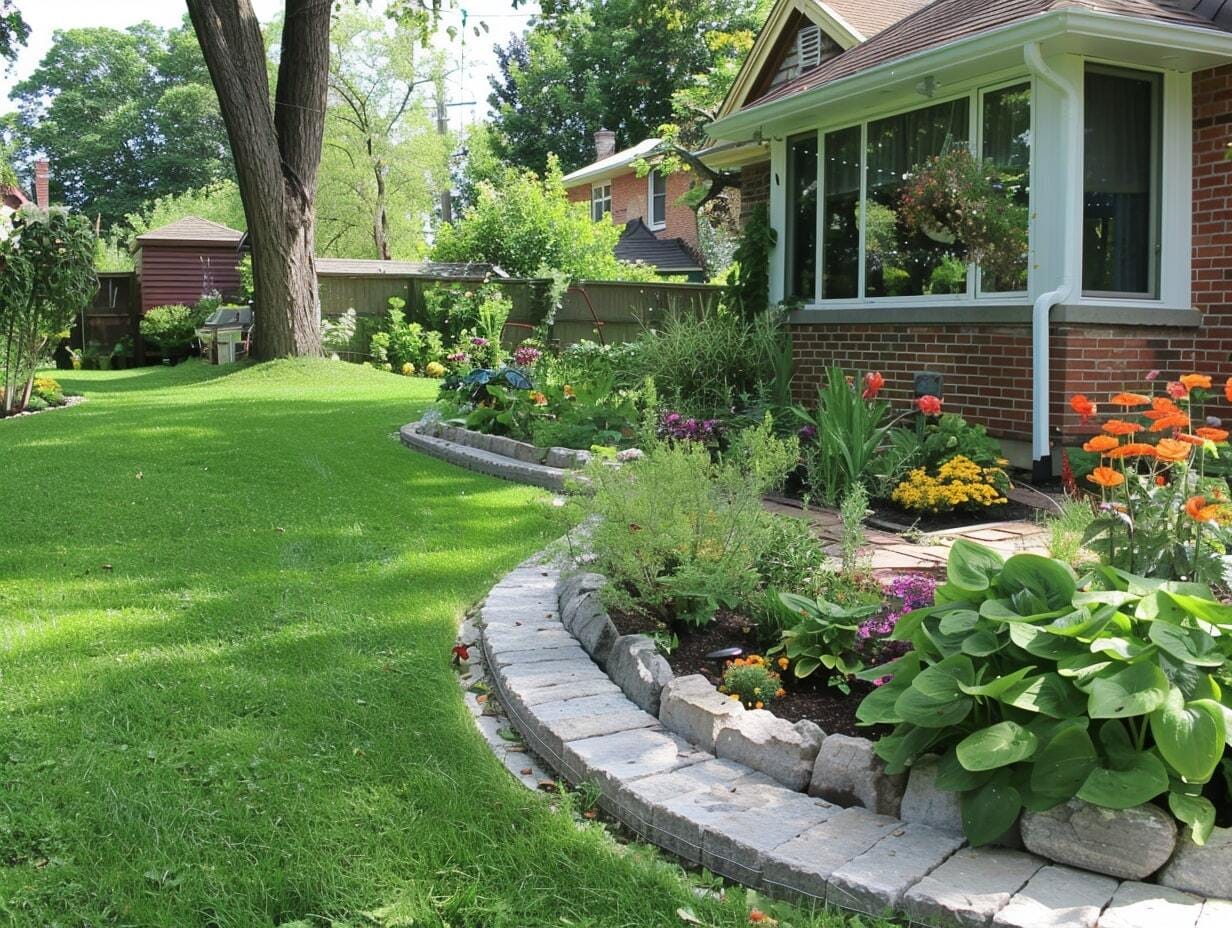
Welcome to the world of garden edging, where creativity meets functionality! Edging is not just about creating clean lines and borders within your garden; it's about enhancing the aesthetic appeal and ensuring the health of your plantings.
This blog explores 33 innovative garden edging ideas that cater to a variety of styles and needs, from the natural rustic charm of woven willow and the structured elegance of formal hedges to modern solutions like metal edging and eco-friendly options like bamboo.
Whether you're a seasoned gardener looking to refine your landscape or a beginner seeking practical solutions, these edging ideas will inspire you to transform your outdoor space into a more beautiful, organized, and functional area.
Use Natural Stone

Incorporate natural stone edging to give a rugged, organic edge to your garden beds. Lay stones like fieldstone or flagstone end to end or stack them for a striking three-dimensional look.
Each stone’s unique shape and color will add a naturalistic charm to your garden. This method is particularly suitable for rustic or cottage-style gardens and is very durable.
Line With Bricks

Make the most of bricks to edge your garden beds. Lay them flat in a trench or stand them upright, end to end, for a classic look. This method provides a crisp, clean line that defines garden spaces neatly.
You can arrange the bricks in different patterns such as curved, straight, or zigzag, offering flexibility to match any garden style. This edging option is also durable and can handle weather changes well, maintaining its appearance over time with limited maintenance.
Experiment With Log Rolls
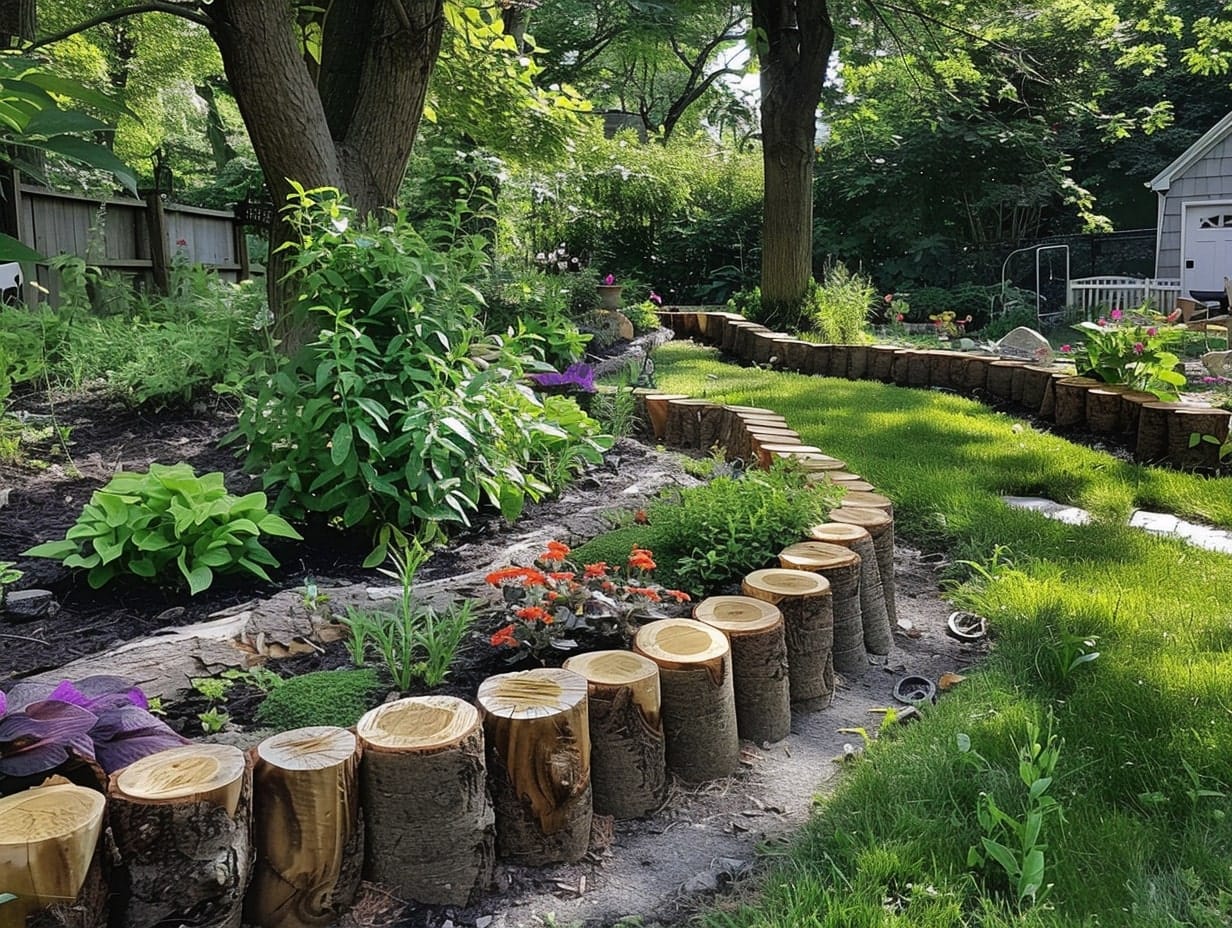
Use log rolls for a woodland feel. Log rolls are sections of logs or half-rounds that can be placed side by side to form a natural-looking barrier.
This type of edging is perfect for garden beds within woodland or rustic-themed gardens. It provides a soft, organic boundary that blends seamlessly with the natural surroundings. Installation is straightforward, and the material is biodegradable, making it an eco-friendly choice.
Install Metal Edging
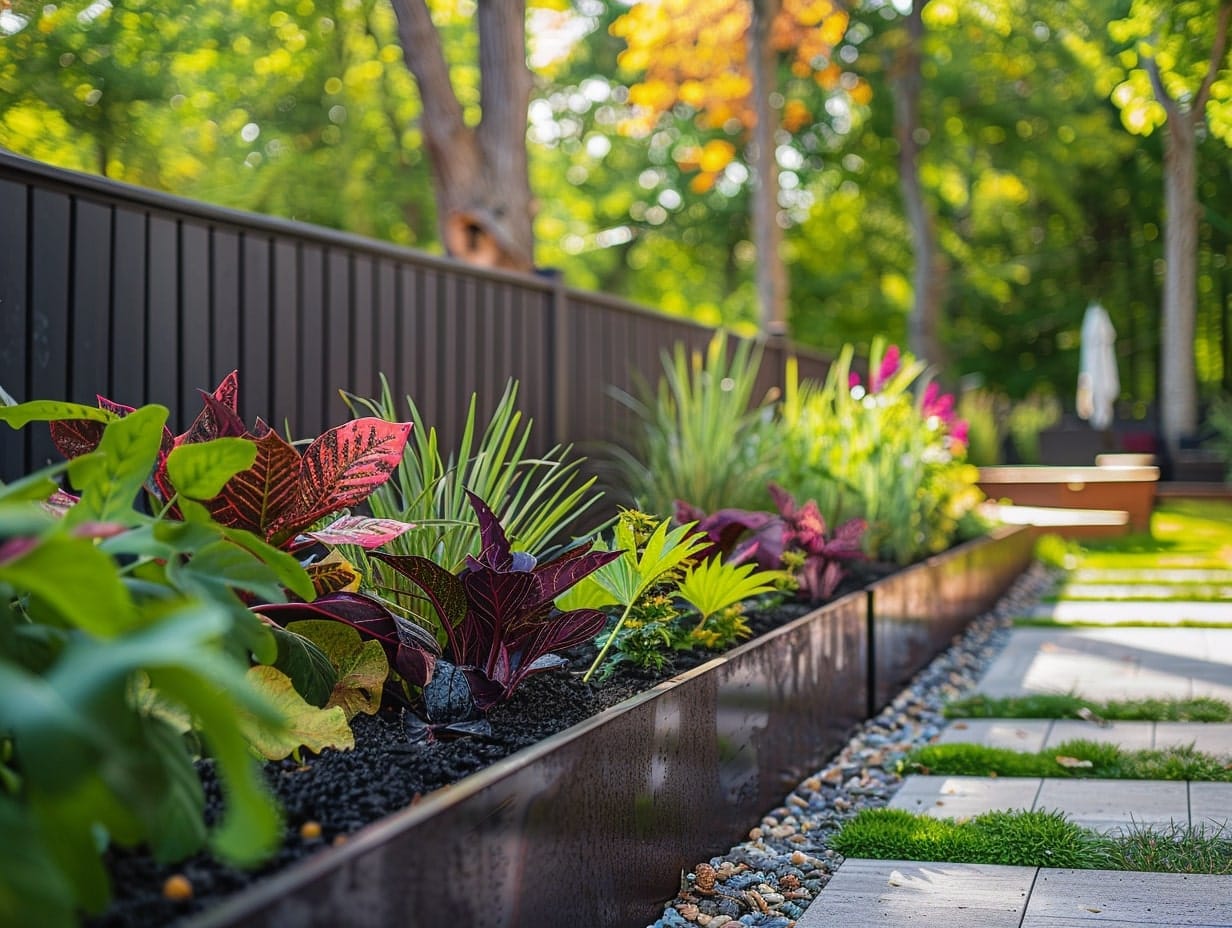
Try metal garden edging to achieve a sleek, modern look. You can mold metal strips, often made from steel or aluminum, into smooth curves or sharp angles to fit any garden layout.
This type of edging is particularly effective for creating clean lines around contemporary gardens and works well for containing gravel or other loose materials. It’s also rust-resistant and long-lasting, making it a practical choice for both aesthetic appeal and functionality.
Lay Down Bamboo Edging
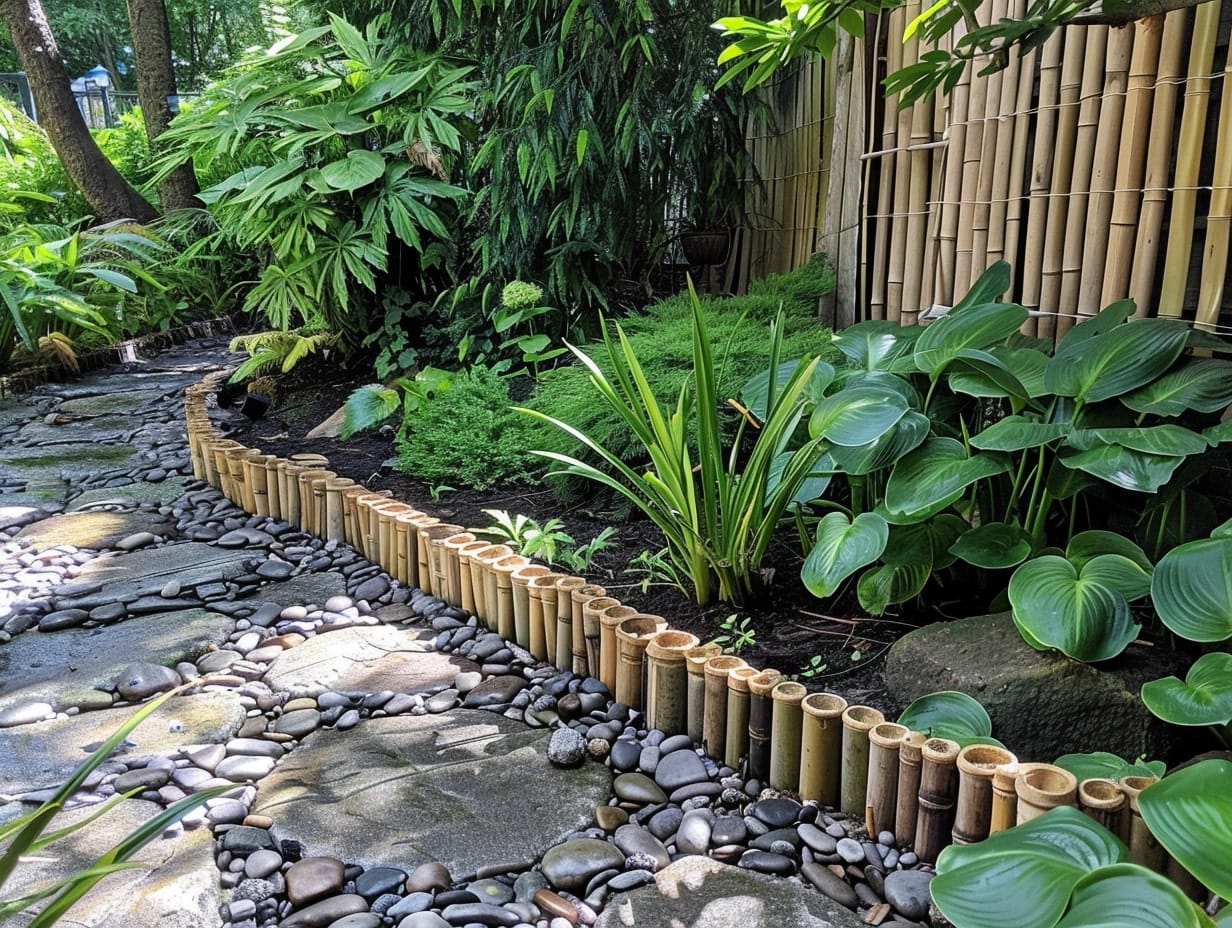
Use bamboo to create a light, eco-friendly border. You can link bamboo sticks together and place them along the edges of garden beds for a minimalist, Asian-inspired design.
This option is ideal for gardens focusing on sustainability as bamboo is a fast-growing, renewable resource. It offers a unique aesthetic that’s particularly suitable for Zen gardens or tropical landscapes.
Shape With Plastic Edging
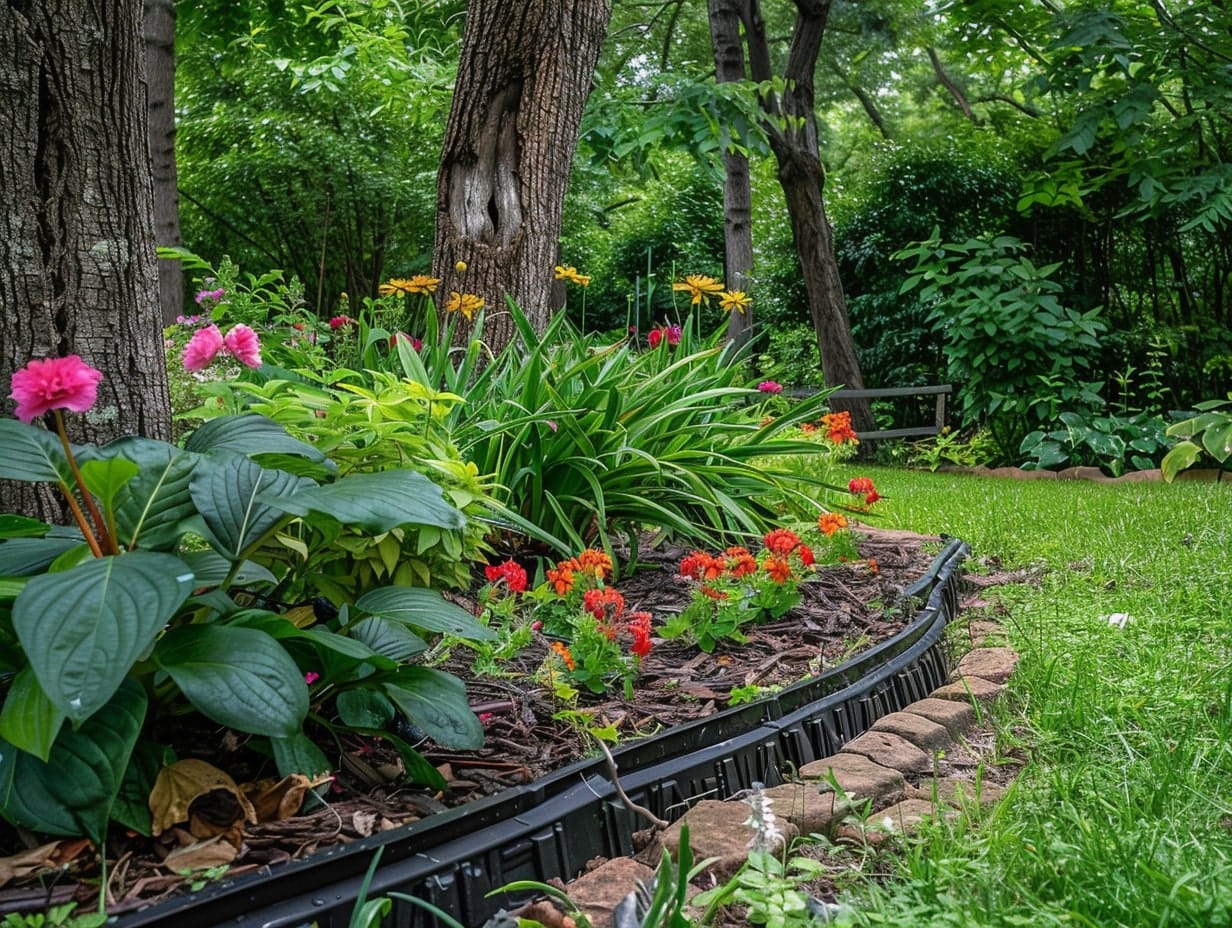
Install plastic edging for a flexible and cost-effective solution. Available in various colors and styles, plastic edging can be easily bent to follow the contours of your garden and is simple to install with stakes.
This type is resistant to weather and soil conditions, making it a durable choice. However, it's less rigid than metal or wood, offering a softer line that can be ideal for casual garden styles.
Decorate With Glass Bottles
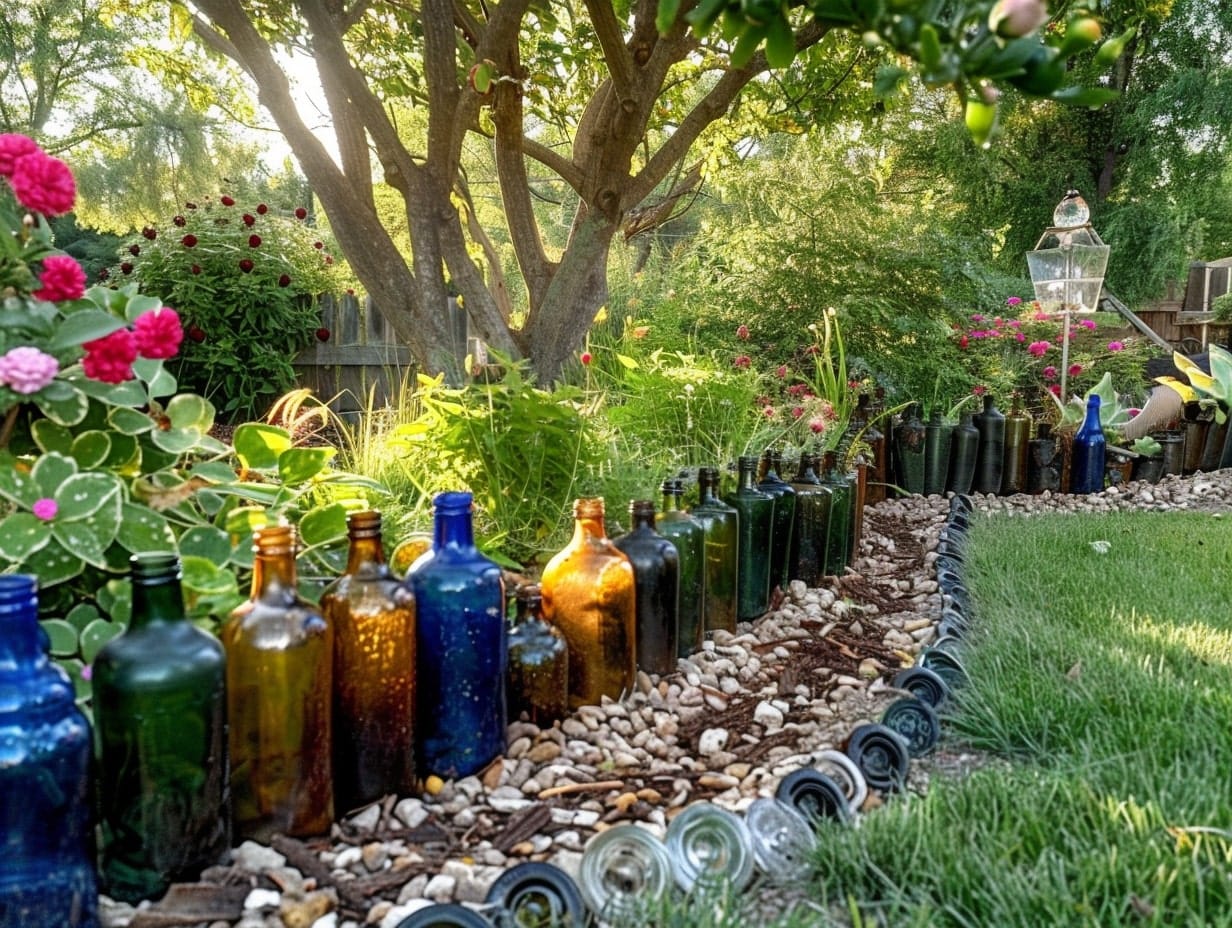
Recycle glass bottles to create a colorful border. Bury the bottles neck down along the edges of your garden beds. This can be a fun way to repurpose materials and add a splash of color.
Choose bottles of similar or varying heights and colors for a uniform or eclectic look. This edging type catches the light and can act as a conversation piece, adding both beauty and whimsy to your garden.
Outline With a Gabion Wall
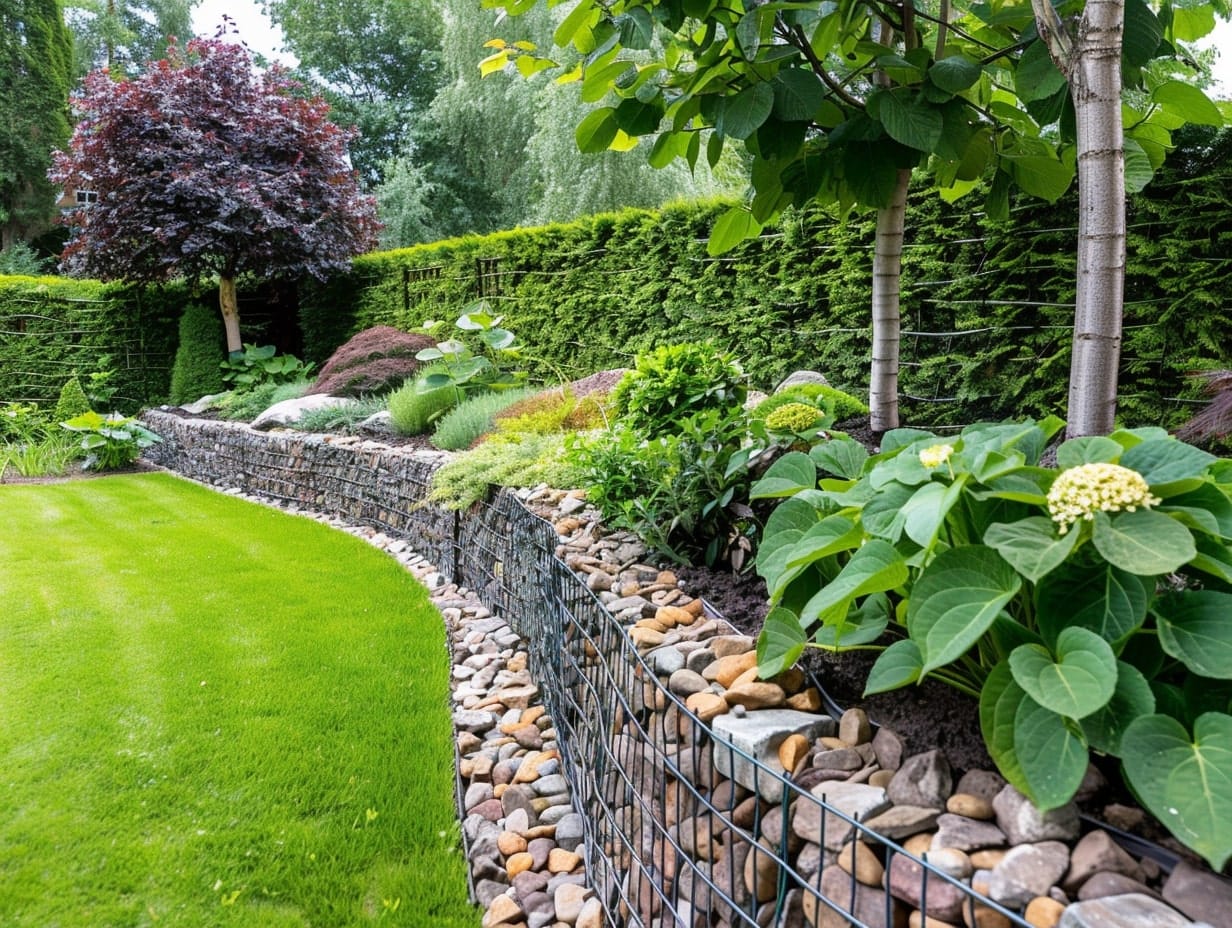
Build a gabion wall for a sturdy and eye-catching edge. Gabions are wire cages filled with rocks or recycled materials. They not only serve as strong, effective edging but also add a modern industrial aesthetic to your landscape.
This type of edging is great for sloped gardens as it provides excellent erosion control. The cages can be assembled at varying heights to create interest and can be planted with succulents or other plants for a greener look.
Create a Living Boundary
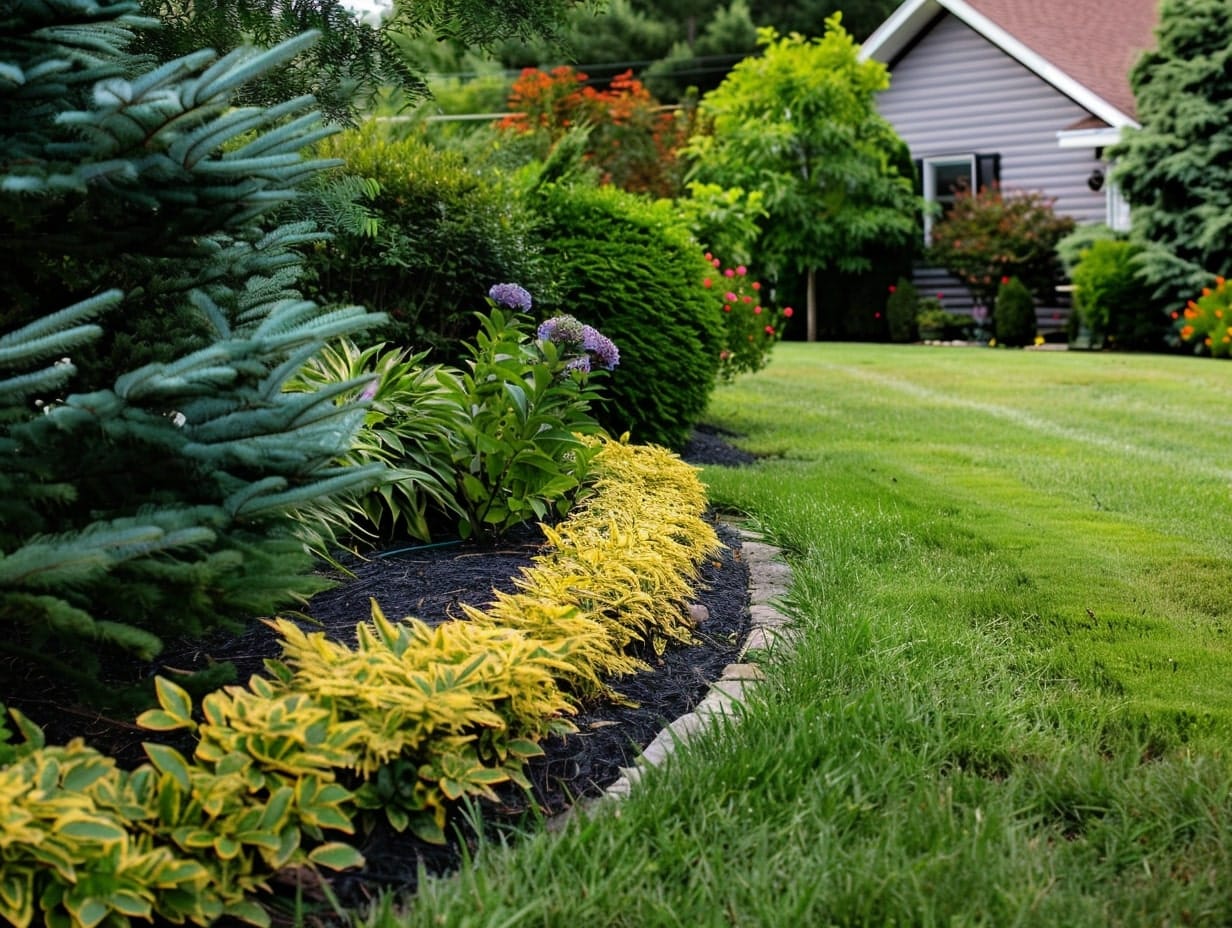
Plant a living edge with low-growing shrubs or ground cover. Choose species that are hardy and can form dense, compact borders like boxwood or creeping thyme.
A living edge is visually appealing and can enhance the overall health of your garden by promoting biodiversity. It requires regular maintenance such as trimming to keep the lines neat, but it can provide a lush, green border throughout the seasons.
Use Rope for Edging
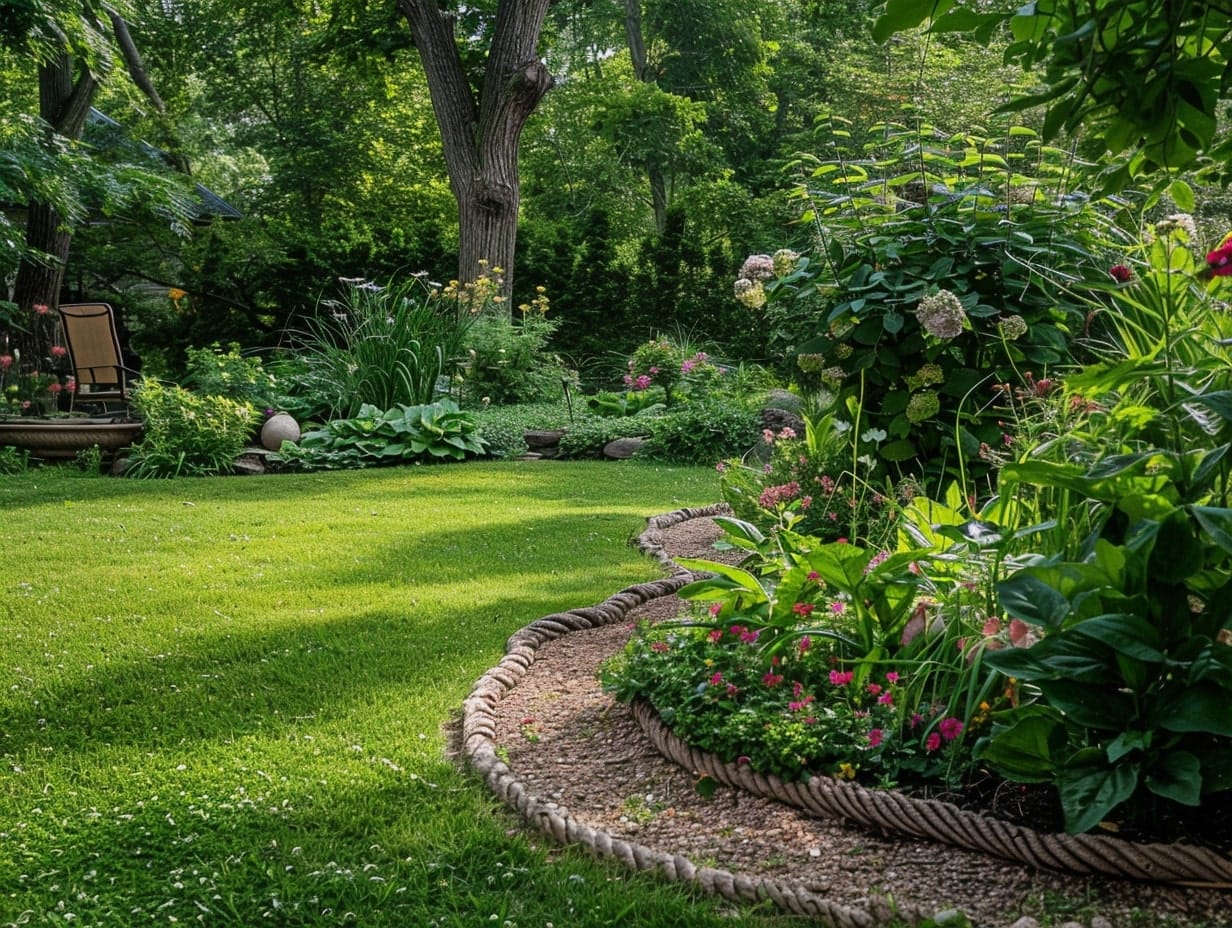
Use thick, natural fiber ropes to outline your garden beds. This nautical-themed edging is especially suitable for seaside gardens but can add character to any garden design.
You can lay ropes in trenches and secure them with stakes for a soft, textured edge that is surprisingly durable and easy to install.
Create a Floral Boundary
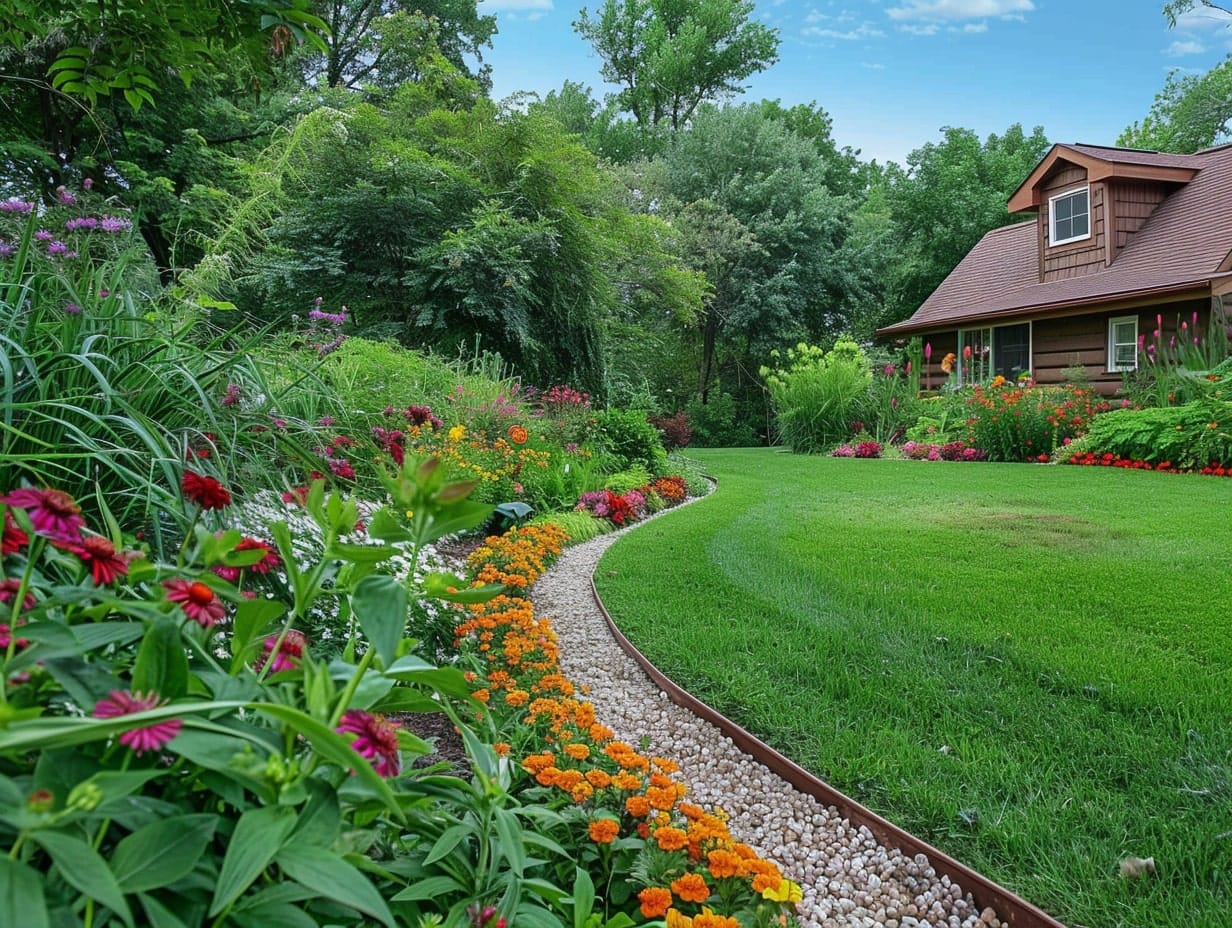
Design a blooming floral boundary to define and beautify the edges of your garden beds. Choose a mix of perennial and annual flowers that bloom at different times of the year to ensure continuous color and interest.
Plant low-growing varieties like lavender, marigolds, or petunias along the borders for a compact, colorful edge. This type of edging serves a dual purpose: it enhances the visual appeal of your garden while also attracting pollinators such as bees and butterflies.
Enhance Aesthetics With Sea Shells

Edge your garden with sea shells for a beach-inspired look. Collect various sizes and types of shells for a natural, textured border that reflects light beautifully.
This edging is ideal for coastal gardens or as a thematic element in a marine-style outdoor area. It’s a creative way to use natural materials that might otherwise be overlooked.
Construct Raised Beds
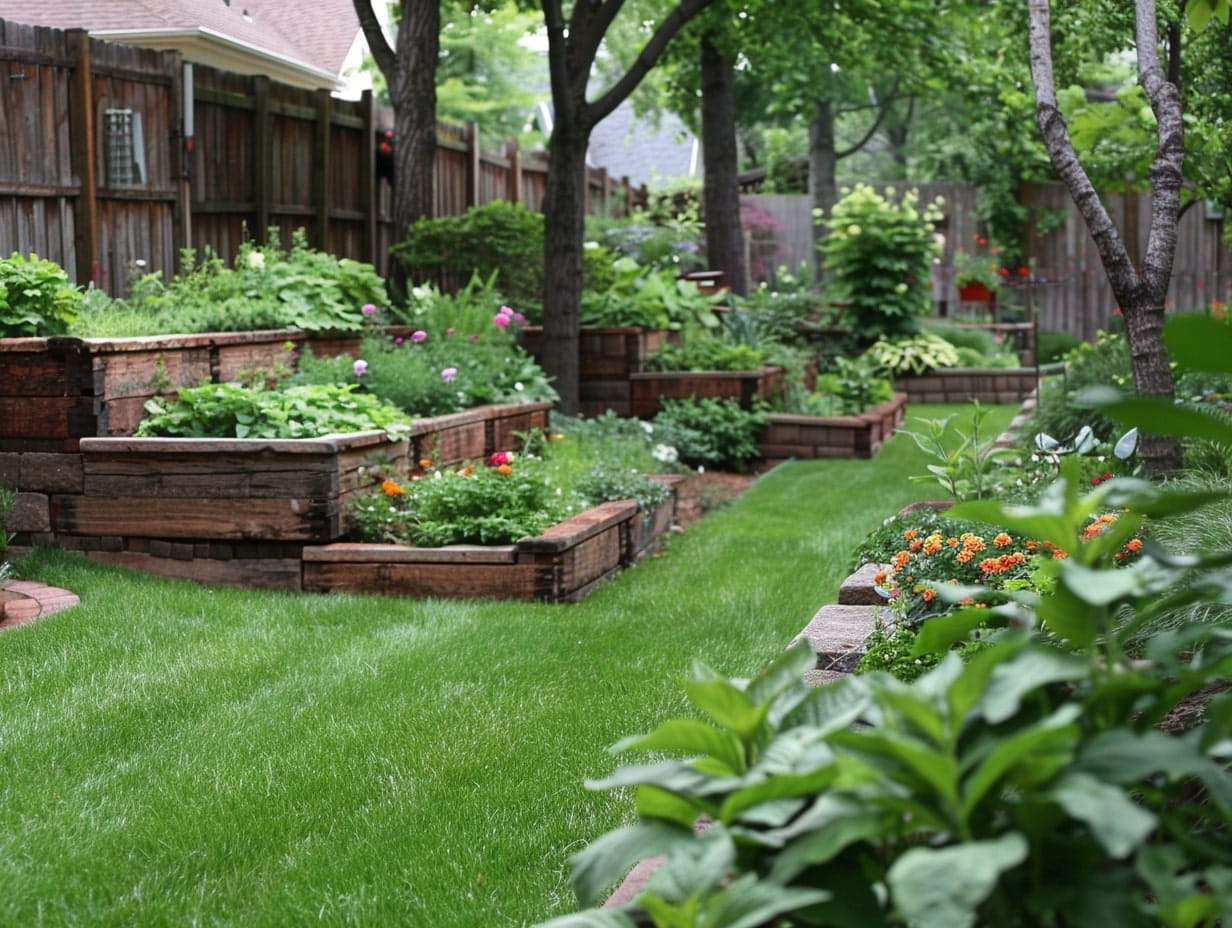
Build raised beds with wooden planks or concrete blocks to define and elevate your garden. Raised beds help with soil compaction, improve drainage, and make gardening easier on your back.
You can build them in any shape and size; they offer a neat, organized appearance that can be very visually appealing.
Set Up Terracotta Pots
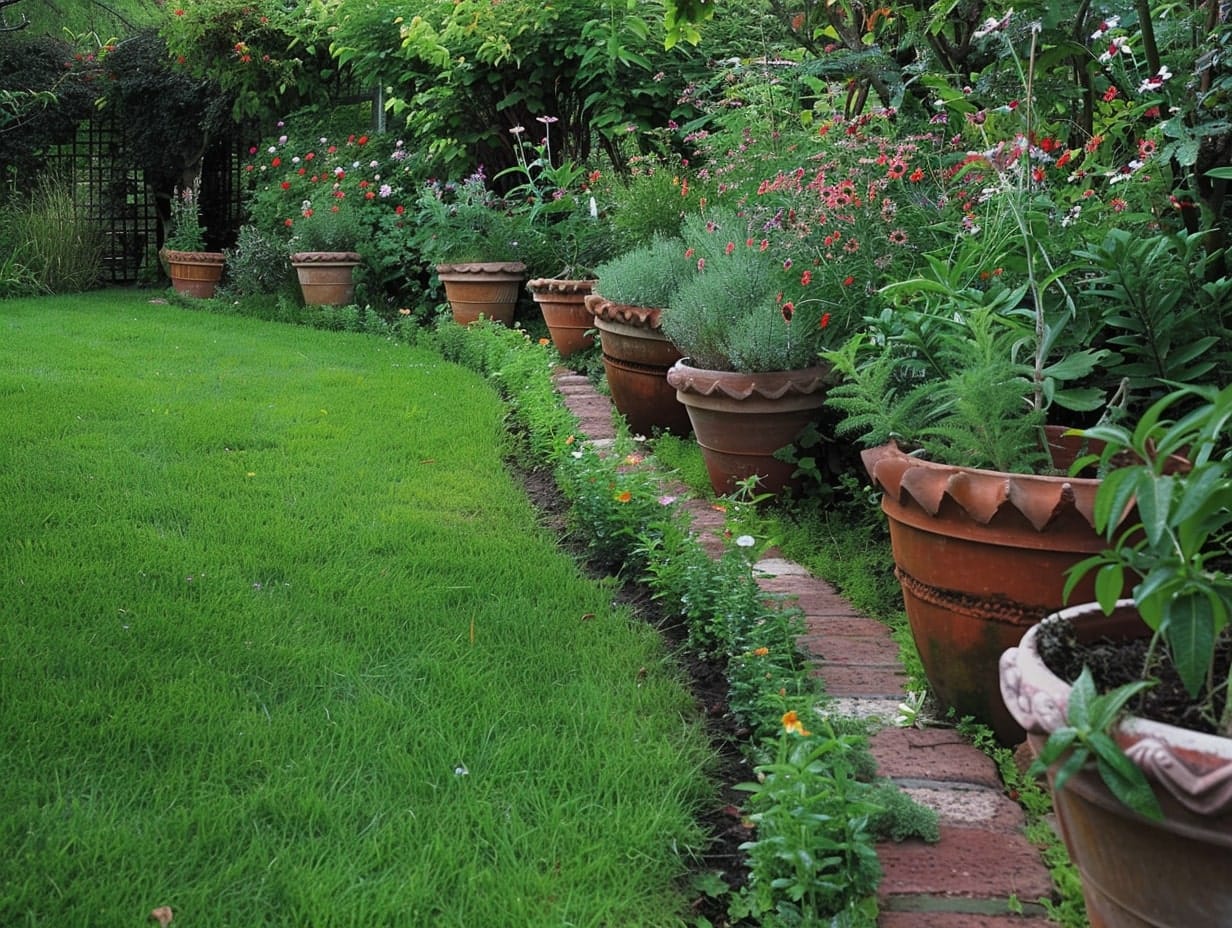
Arrange terracotta pots side by side to form an innovative and artistic edge. You can use whole pots or broken pot pieces for a more rustic look.
This approach allows for flexibility in design and is perfect for gardeners who enjoy changing their landscape periodically. Plus, it provides additional planting space for small plants or herbs.
Dig a Moat to Create a Unique Water Feature
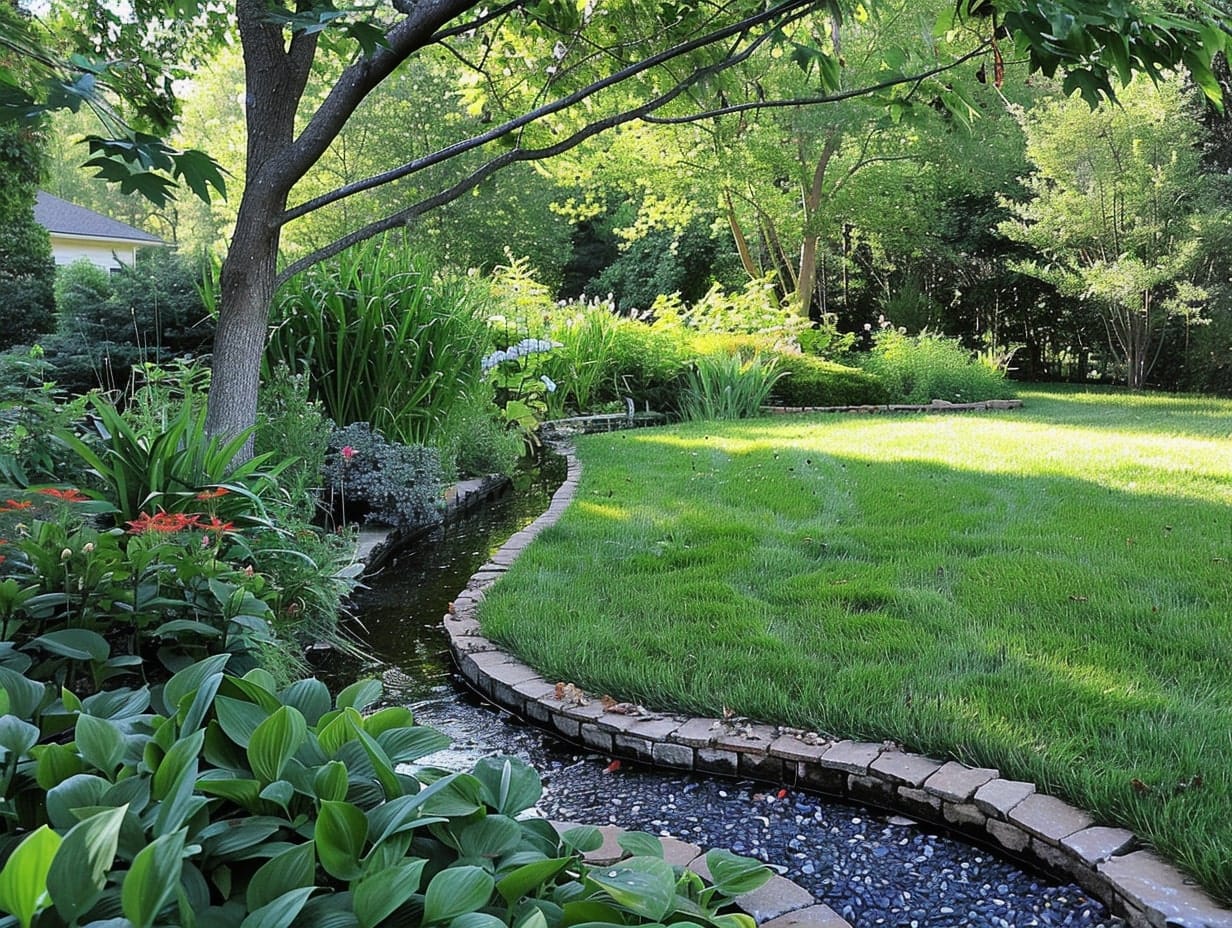
Transform your garden by excavating a shallow moat as both an edging solution and a captivating water feature. This innovative approach not only delineates your garden areas but also enhances the ambience with the soothing sounds of water.
Plant moisture-loving flora like irises or hostas along the water's edge to intensify the natural appeal, or fill the moat with decorative stones for a dry creek bed look.
Create a Modern Edge With Cinder Blocks
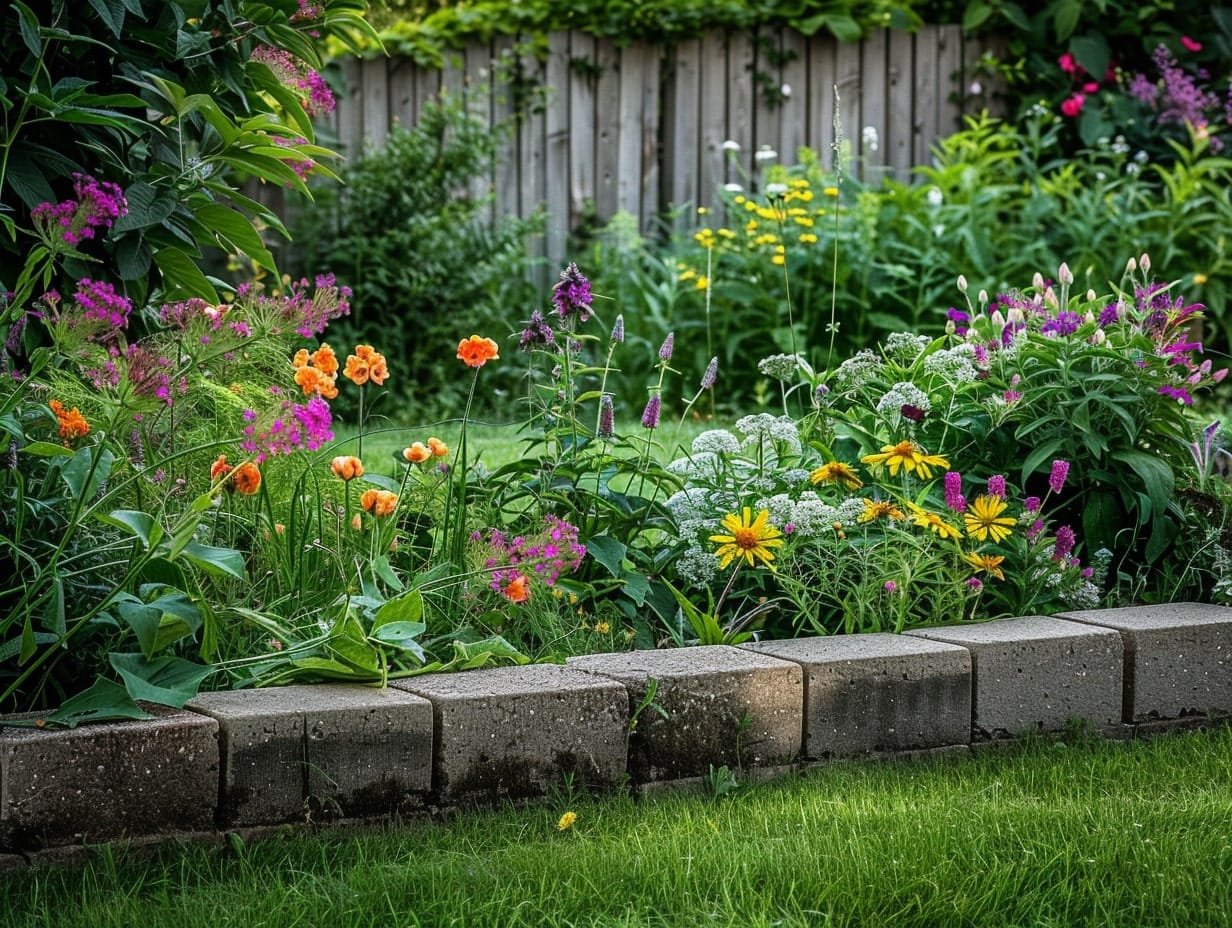
Use cinder blocks to forge a contemporary and versatile garden edge. These industrial-style blocks are perfect for modern landscape designs, offering both functionality and a minimalist aesthetic.
Lay them lengthwise to define garden borders or stack them for added height, creating raised planting beds. The hollow centers of cinder blocks are ideal for additional plantings — herbs, succulents, or annuals fit perfectly and add bursts of life and color.
Build a Rustic Edge With Woven Willow

Craft a naturally beautiful border in your garden using woven willow. This technique involves intertwining flexible willow branches to create a continuous, organic-looking edge that enhances the rustic charm of any outdoor space.
Ideal for cottage or woodland-themed gardens, woven willow edging blends harmoniously with the environment while providing a robust barrier that defines garden beds or pathways.
Plant a Formal Hedge as a Living Border
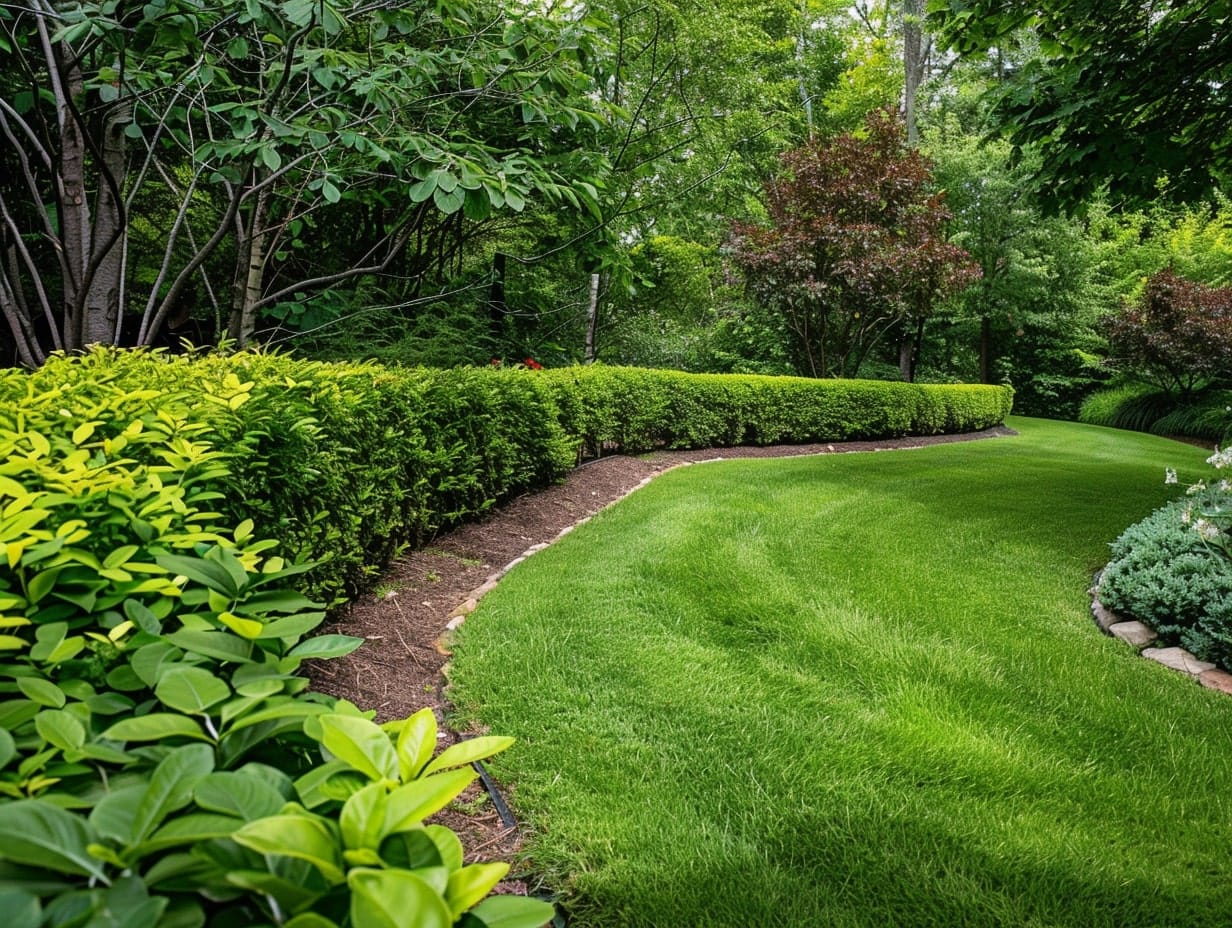
Establish a classic and elegant garden boundary with a formal hedge. Select shrubs like boxwood, privet, or yew that are known for their dense foliage and ability to withstand frequent pruning.
Planting a hedge as a living border not only provides a natural screen that enhances privacy but also adds a structured, green framework to your garden.
Install Rubber Edging
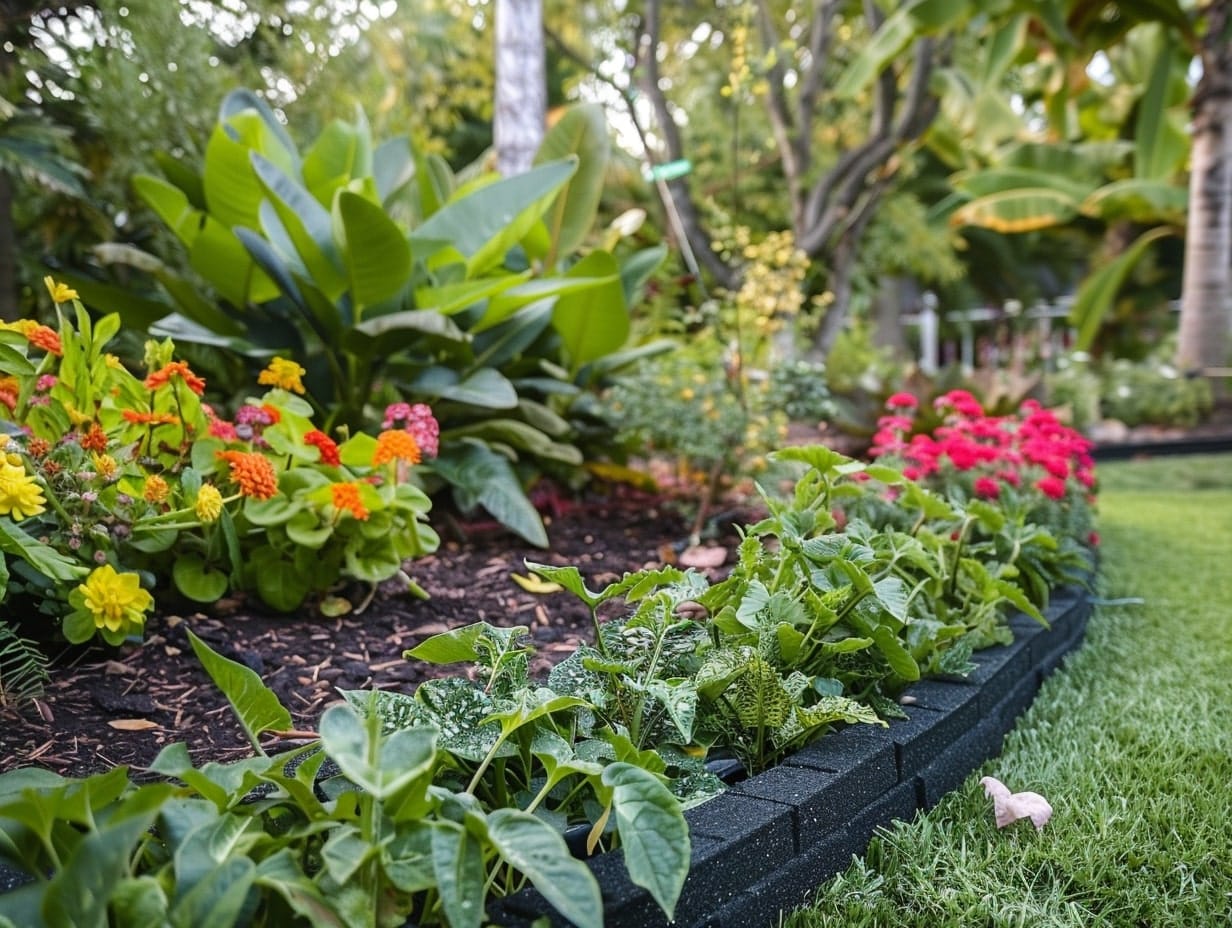
Opt for rubber edging for a flexible and eco-friendly solution to your garden borders. Made from recycled materials, such as old tires, this type of edging is not only sustainable but also exceptionally durable and weather-resistant.
It easily conforms to any shape and contour of your garden, making it ideal for encircling tree bases, flower beds, or pathways.
Define Edges With Pea Gravel
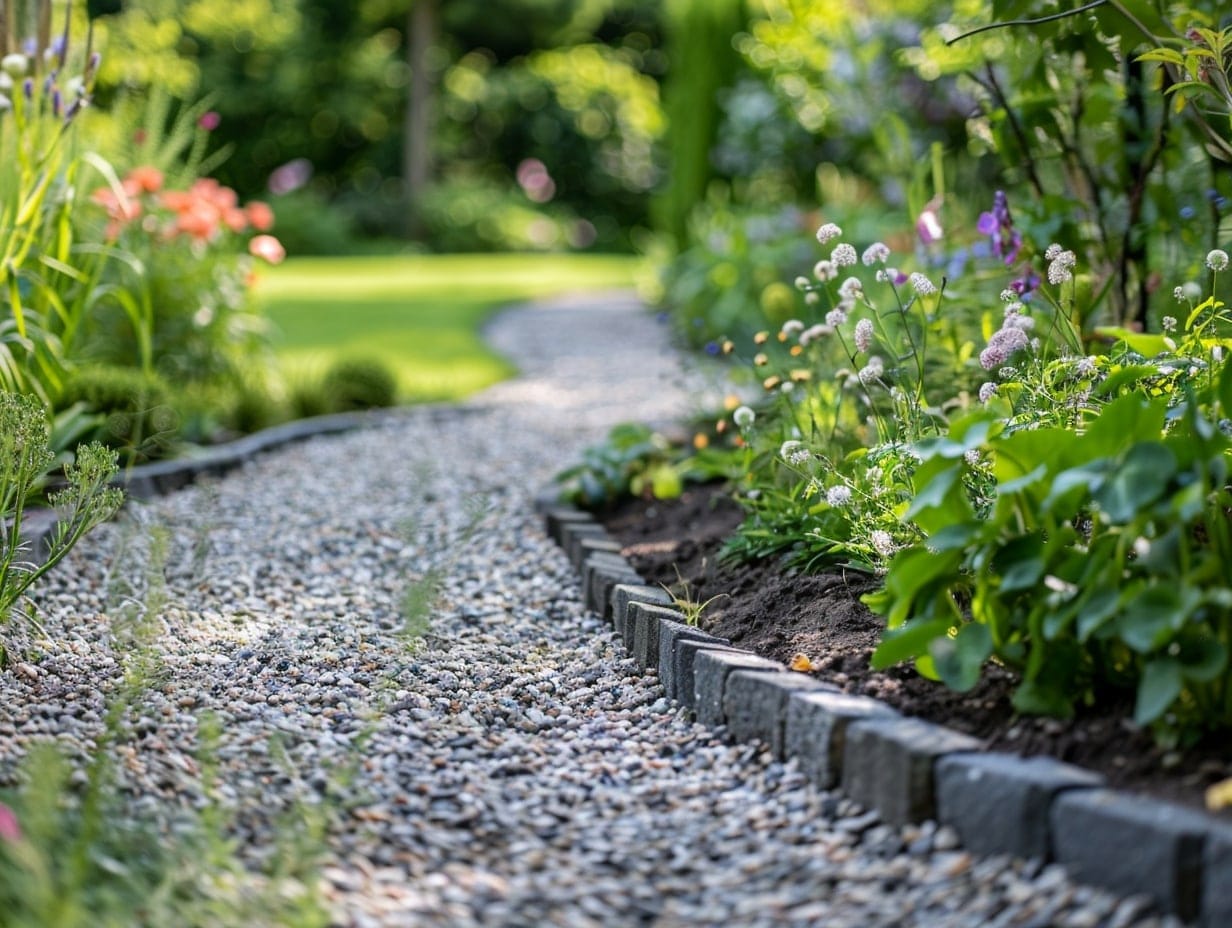
Utilize pea gravel to create crisp, defined edges around your garden beds and pathways. This small, rounded stone is not only aesthetically pleasing but also functional, offering excellent drainage and preventing soil erosion.
Its neutral shades of gray and beige blend well with various garden designs, from modern minimalism to rustic charm. Lay a border of metal or stone edging to keep the pea gravel contained and maintain a tidy appearance.
Illuminate With Solar Lights
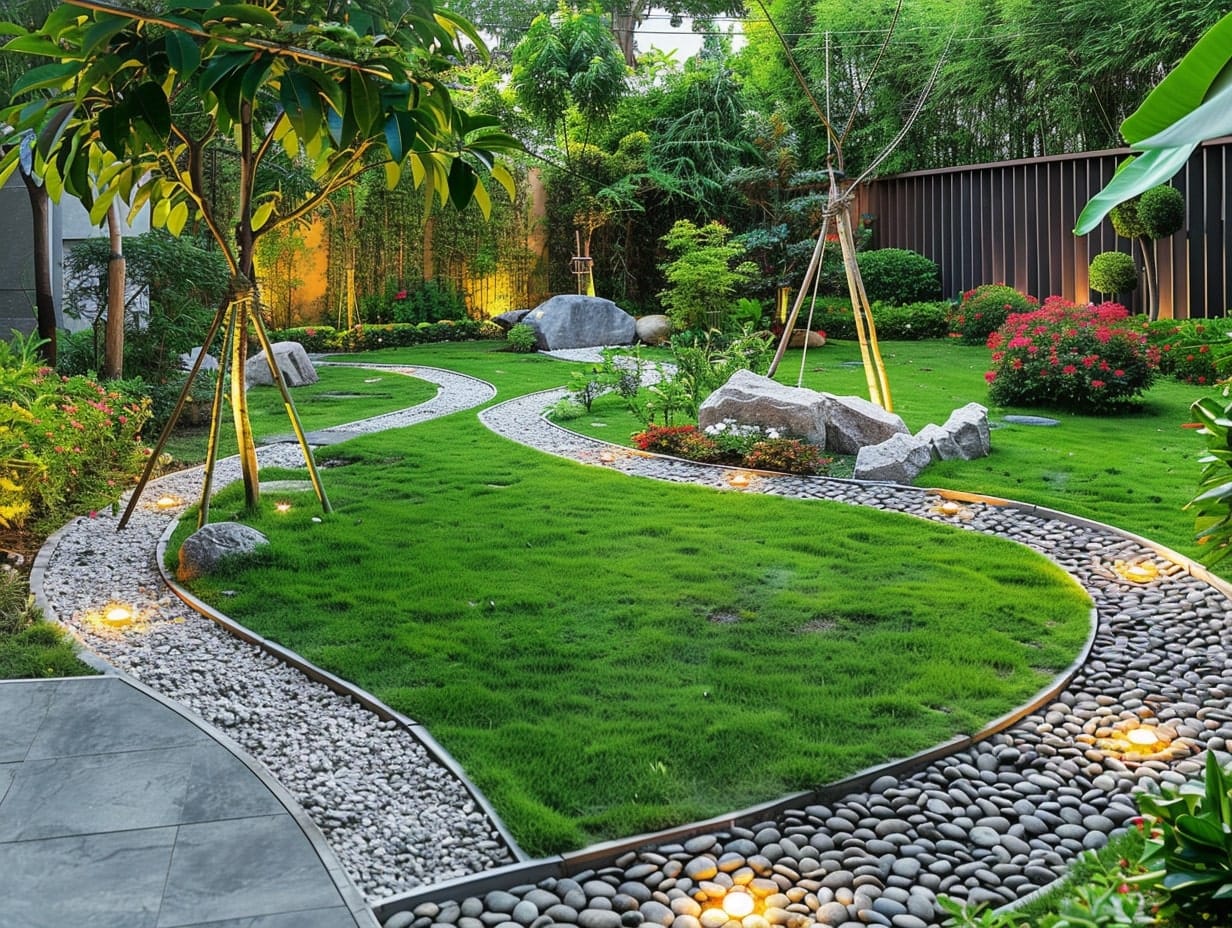
Enhance your garden's ambience and usability after sunset by edging pathways and beds with solar lights. These eco-friendly lights harness solar energy during the day and illuminate your garden areas at night, offering both beauty and practicality without additional electricity costs.
Place solar lights strategically to highlight your garden's best features, guide foot traffic, and increase safety by improving visibility.
Integrate Wrought Iron Panels
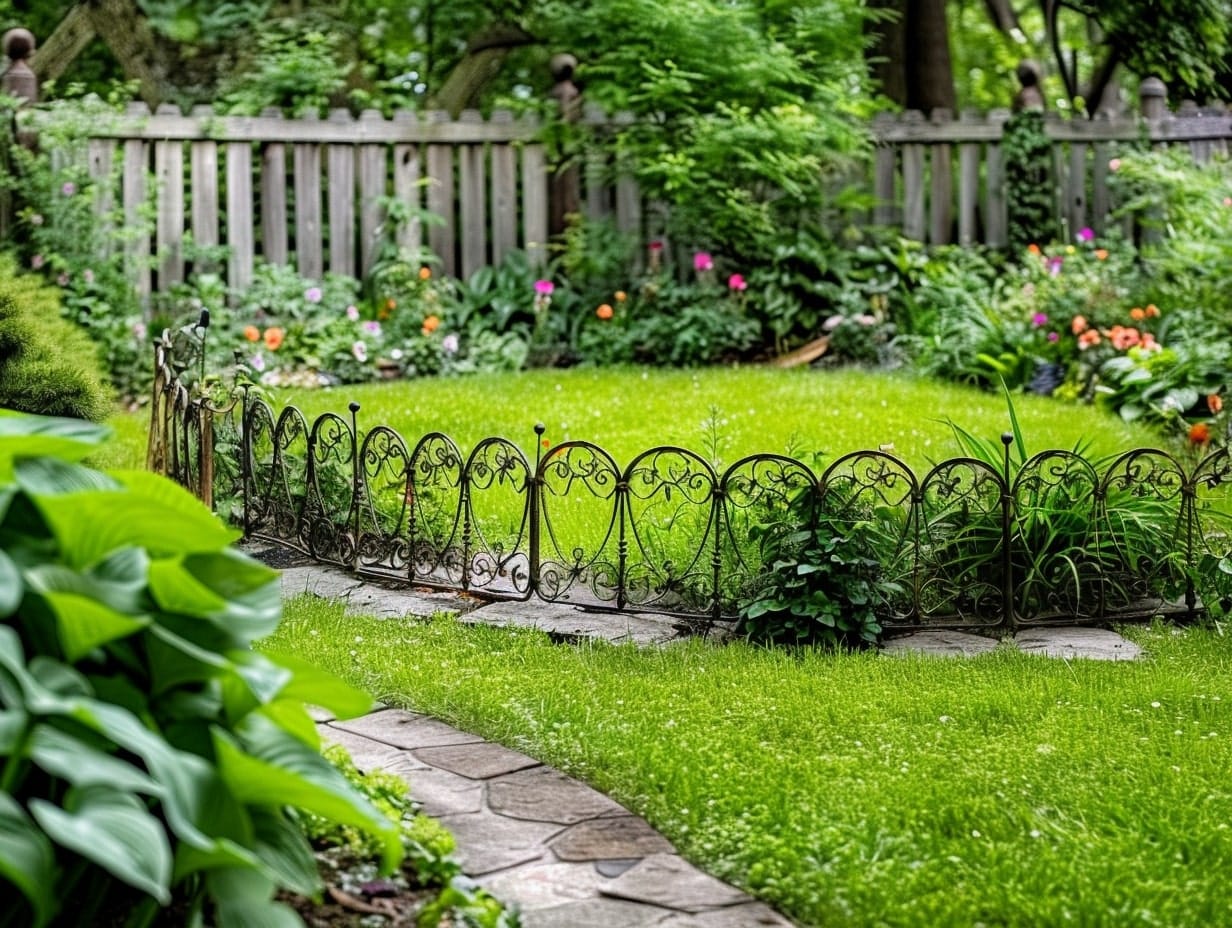
Incorporate decorative wrought iron panels to create an elegant and sophisticated garden edge. These panels offer a timeless look, blending beautifully with both classic and modern landscape designs.
Whether used to delineate garden beds or as a trellis for climbing plants, wrought iron provides durability and visual interest. The intricate patterns and robust construction of these panels not only serve as a strong barrier but also enhance garden aesthetics, adding a sense of luxury and artistry.
Weave a Bamboo Screen
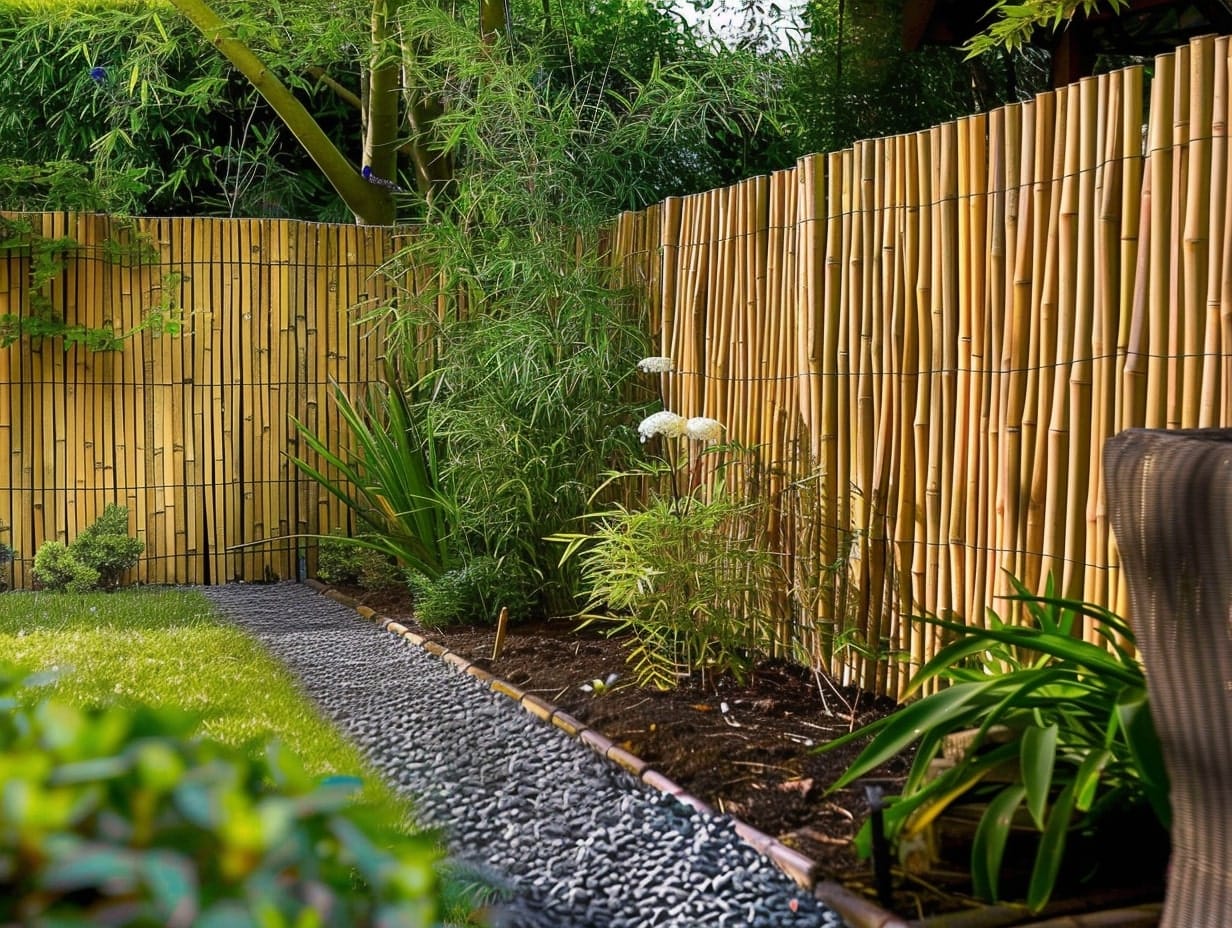
Weave a bamboo screen to create a naturally elegant boundary for your garden spaces. This edging method involves using bamboo canes, either whole or split, woven together to form a continuous barrier that's both lightweight and sustainable.
Bamboo is a fast-growing material, making it an eco-friendly choice for garden design. The screen can serve multiple functions: it provides privacy, blocks unwanted views, and can even act as a windbreak for delicate plants.
Use Colored Pebbles

Brighten up your garden paths and borders with colored pebbles. This simple yet effective edging technique not only defines garden spaces but also adds a playful splash of color. Choose pebbles in a variety of hues to match or contrast with the plants and other elements in your garden.
Lay them along the edges of pathways or around flower beds to maintain clear divisions and prevent soil from spilling onto walkways.
Create a Sparkling Effect With Sea Glass
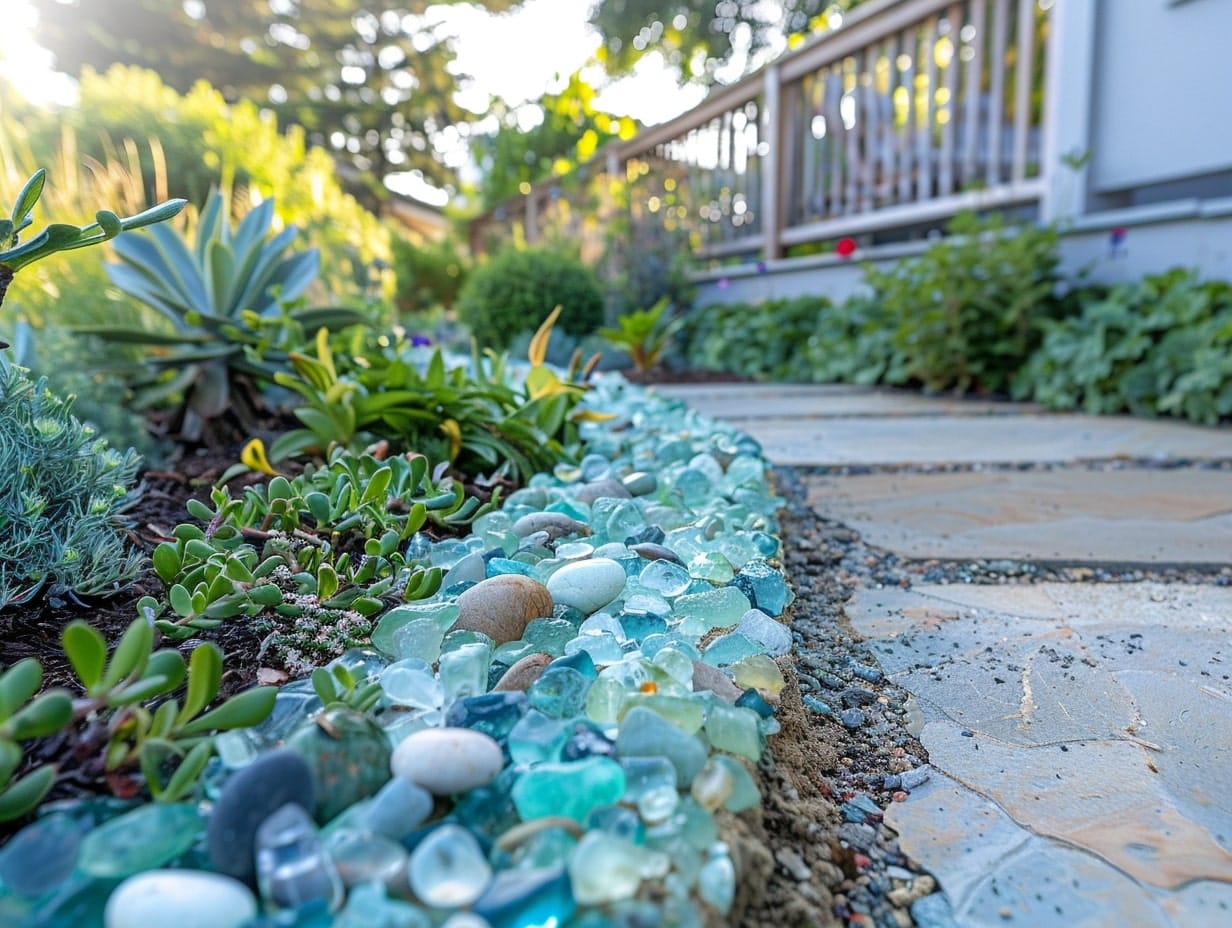
Incorporate sea glass into your garden edging to achieve a shimmering, decorative effect that mimics the look of water. Embed pieces of polished sea glass into concrete or resin along the edges of your pathways or flower beds.
This not only secures the glass but also ensures it catches the light, creating a luminous accent in your garden. The varied hues of sea glass, from deep blues and greens to clear and amber, can complement any garden palette, adding a unique visual texture and color.
Pave With Cobblestones
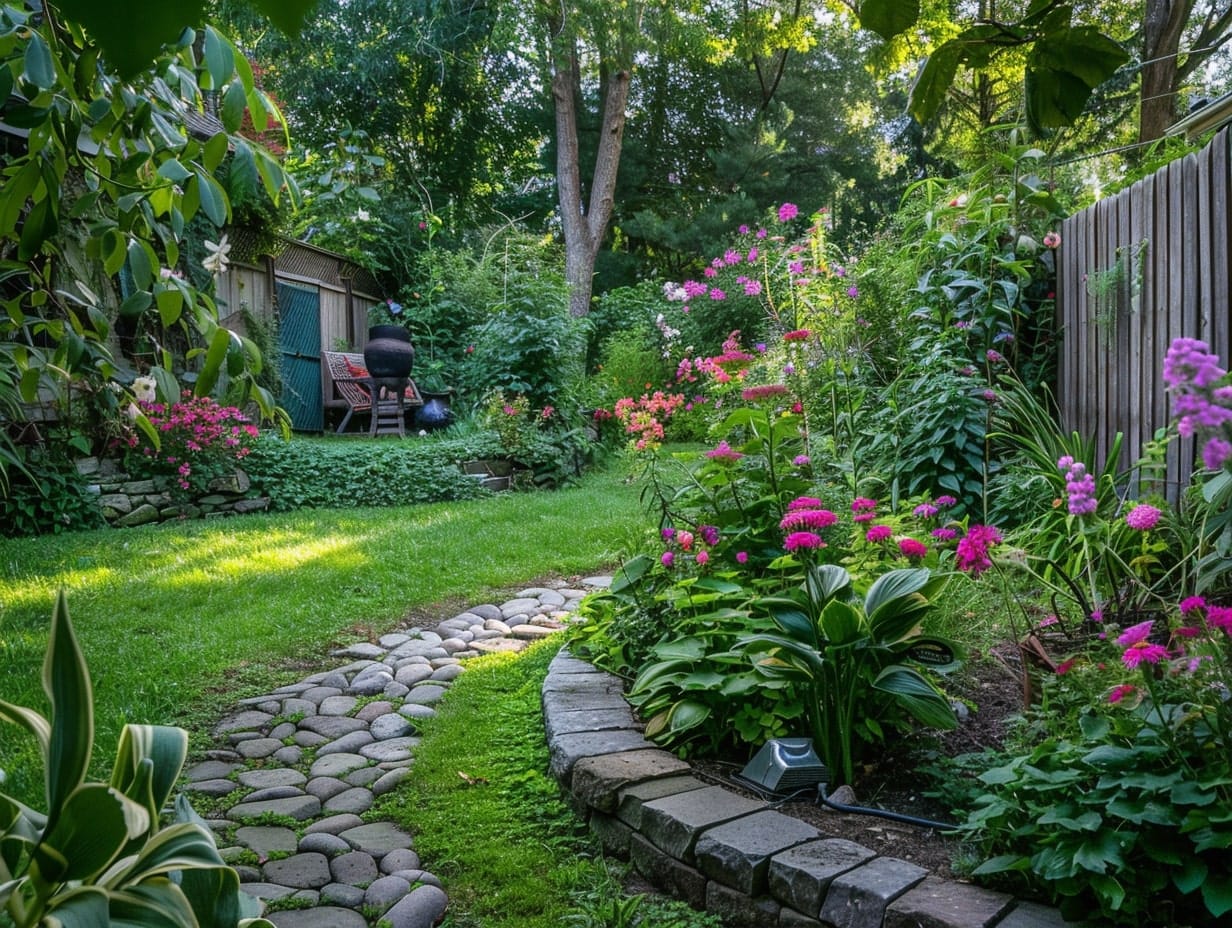
Pave the edges of your garden paths and beds with cobblestones for a timeless, European-inspired look. These small, naturally rounded stones offer a charming, old-world feel and are exceptionally durable, making them ideal for high-traffic areas like walkways.
Lay them tightly to form a solid boundary that can handle both foot and vehicle traffic. Cobblestones come in a variety of earthy colors, allowing them to blend seamlessly into almost any landscape design, from rustic country gardens to formal English courtyards.
Build a Miniature Picket Fence

Construct a miniature picket fence around your garden beds for a quaint, classic look that evokes charming cottage vibes. This small-scale fence serves as a delightful visual barrier that separates different areas of your garden without obstructing views.
Paint it white or any color that complements your outdoor decor to add a fresh, clean touch, or leave it natural for a more rustic appearance.
Cast a Concrete Border
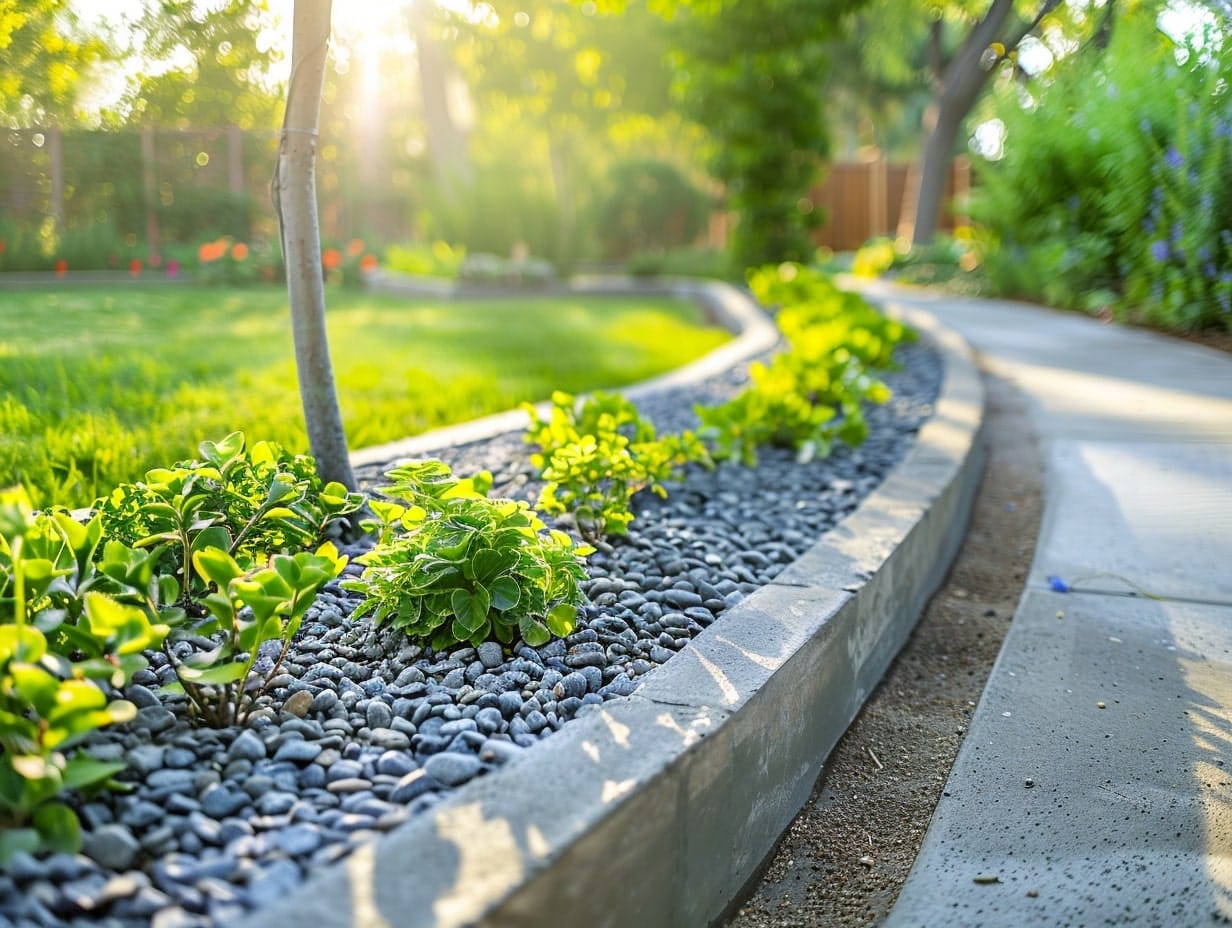
Create a cast concrete border for a permanent, sleek solution to garden edging. This method involves pouring concrete into molds or directly into a trench around your garden beds or pathways.
Once set, concrete provides a strong, continuous edge that effectively contains soil and mulch, preventing them from spilling into lawn areas. You can customize concrete borders with dyes to match your garden’s color scheme or stamp them with patterns to mimic natural stone or brick.
Create a Mosaic Border
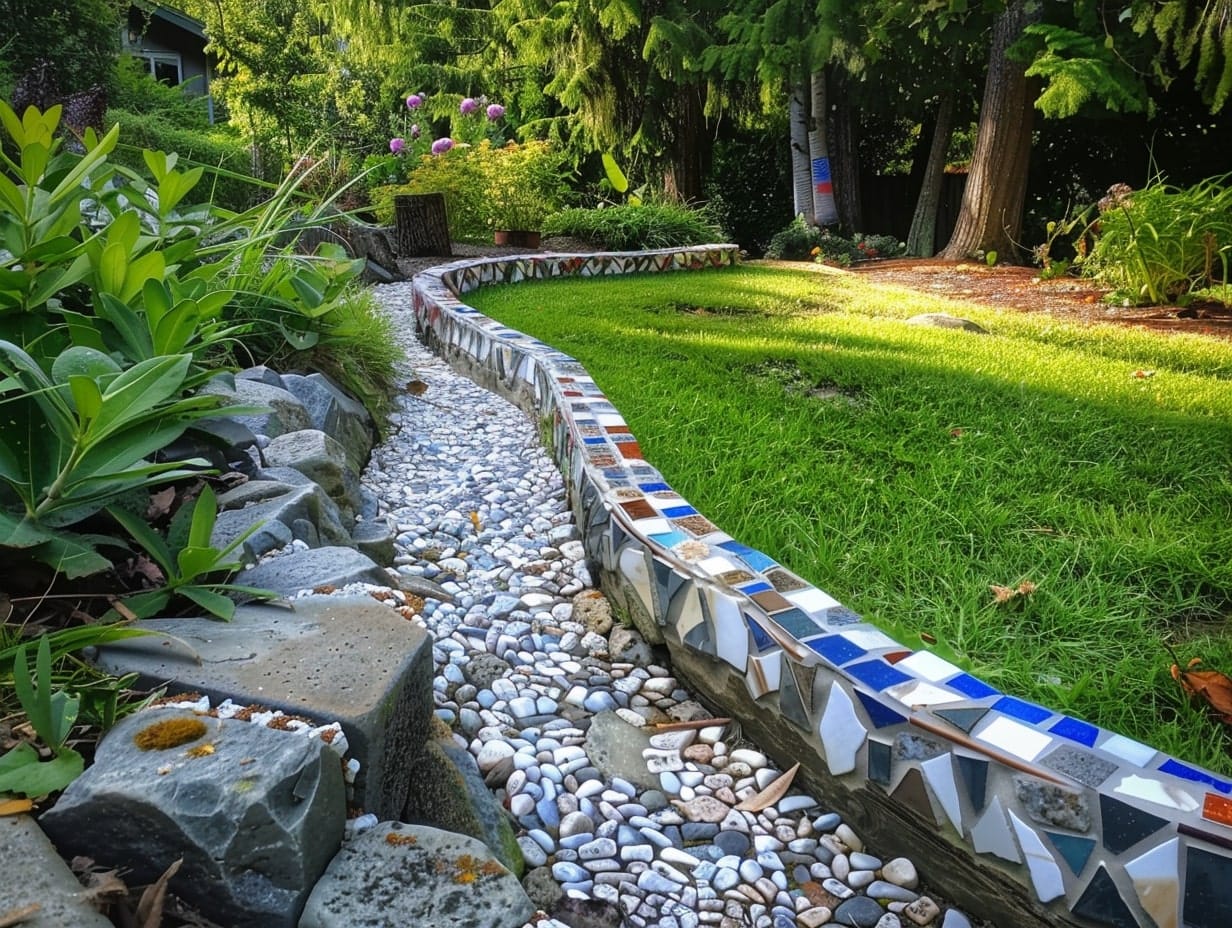
Enhance your garden with a vibrant, artistic touch by creating a mosaic border. Use broken tiles, colored glass, ceramics, or stones to craft a unique, eye-catching edge along your garden beds or pathways.
Lay the pieces into a bed of mortar or concrete, arranging them in patterns or random designs according to your aesthetic preferences. This method not only personalizes your garden space but also recycles materials, adding an eco-friendly element to your design.
Install a Eucalyptus Border
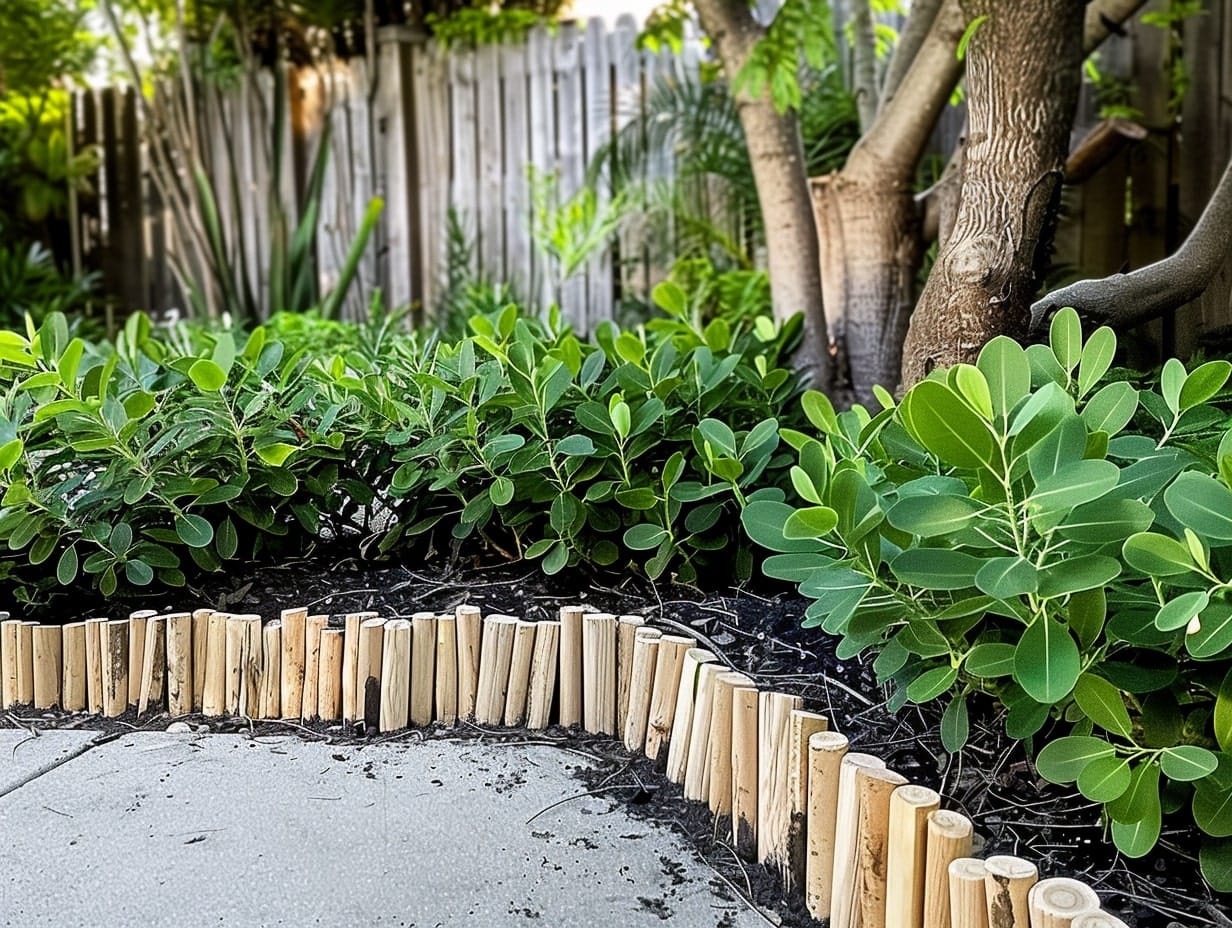
Incorporate a eucalyptus border for a fragrant and aesthetically pleasing edge to your garden beds. Plant eucalyptus shrubs or use trimmed branches laid horizontally or vertically to create a natural barrier.
The silvery-green foliage and distinctive aroma of eucalyptus not only add sensory appeal but also have natural pest-repellent properties, making it a functional choice for garden edging.
Implement Hand Edging
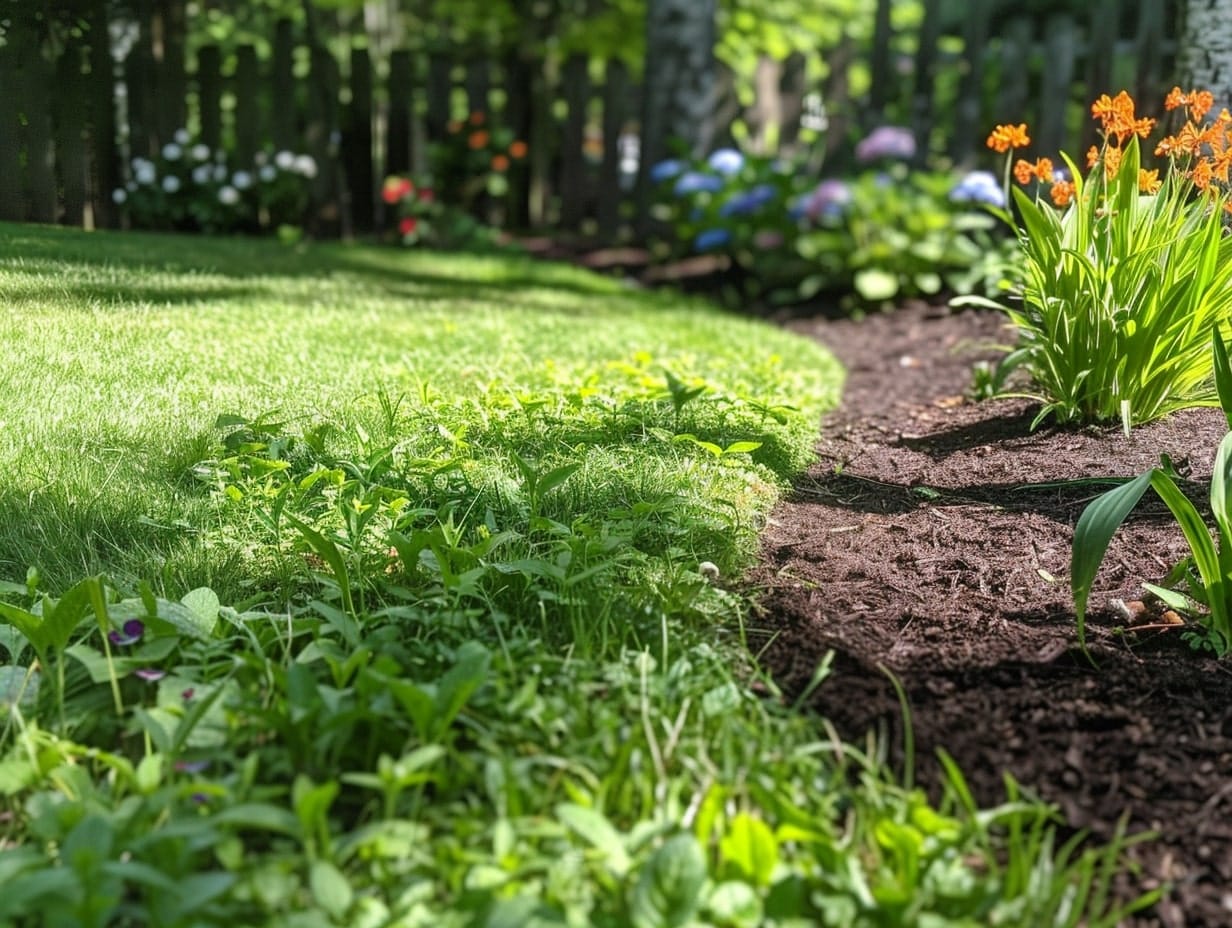
Hand edging is a traditional technique that involves manually shaping the borders of your garden beds and lawns to create clean, defined lines. Use a sharp garden spade or a specialized half-moon edger to cut neatly into the soil, separating the grass from the garden beds.
This method allows for precise control over the shape and flow of your garden edges, making it ideal for intricate designs or curves.
Create a Cedar Frame

Cedar edging provides a naturally durable and aesthetically pleasing boundary for your garden beds. Use cedar wood planks or logs, either in their natural form or cut to size, to create a border that complements any garden style.
Cedar is naturally resistant to rot, decay, and insect infestations, making it an excellent choice for outdoor use. Its rich, reddish hue weathers beautifully over time, blending seamlessly into natural landscapes.
Use Scalloped Concrete Walls

Install scalloped concrete walls for a decorative and sturdy edge to your garden beds. These precast concrete sections feature graceful, curved tops that add an element of elegance and sophistication to your landscape.
Available in various colors and finishes, scalloped walls can be matched to complement your existing garden style, whether traditional or contemporary. They are particularly effective for raised beds, helping to contain soil and mulch while providing a strong visual statement.
